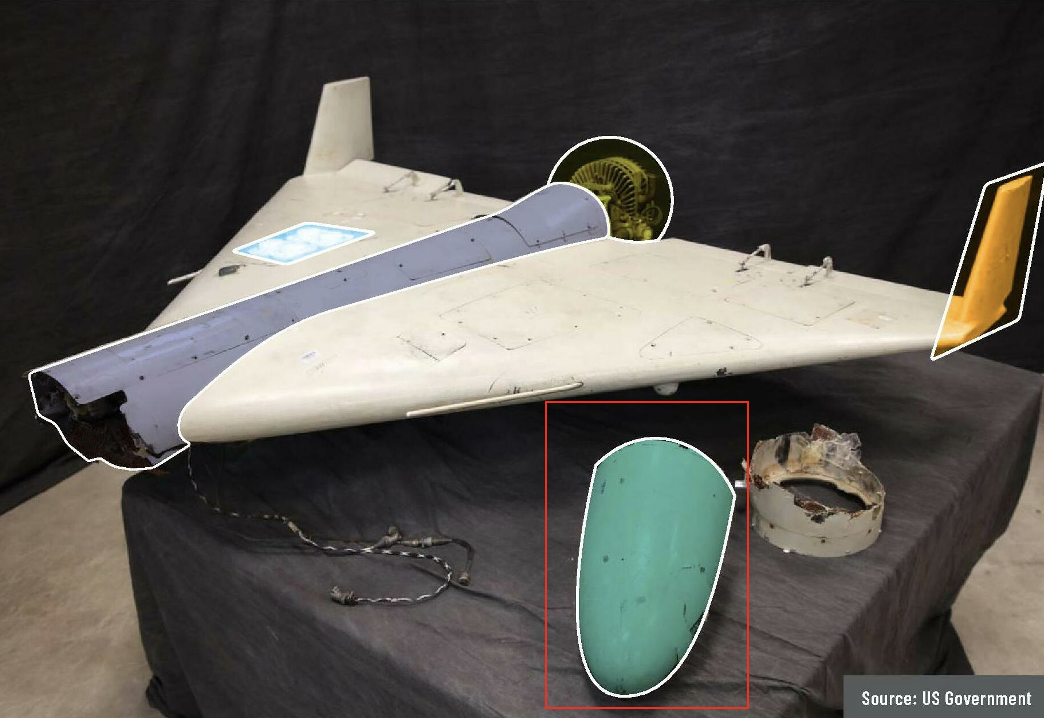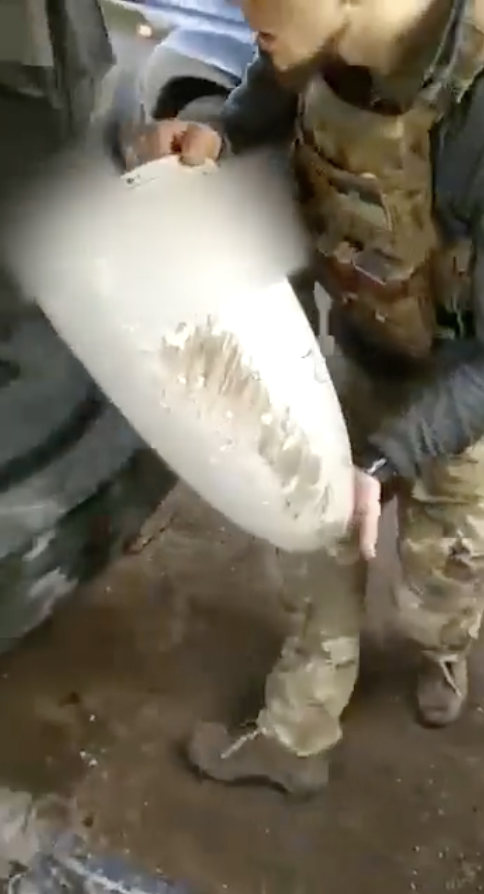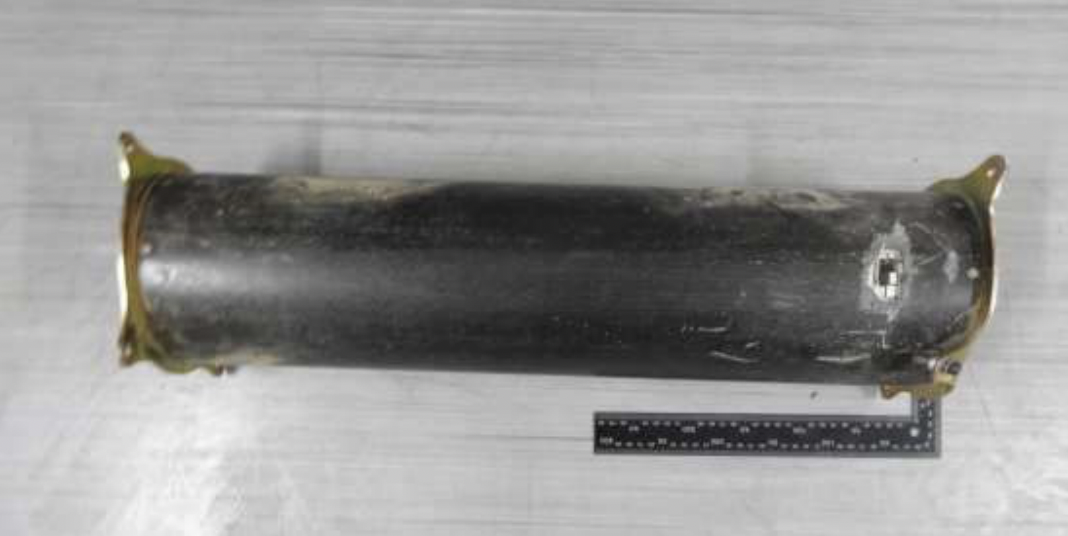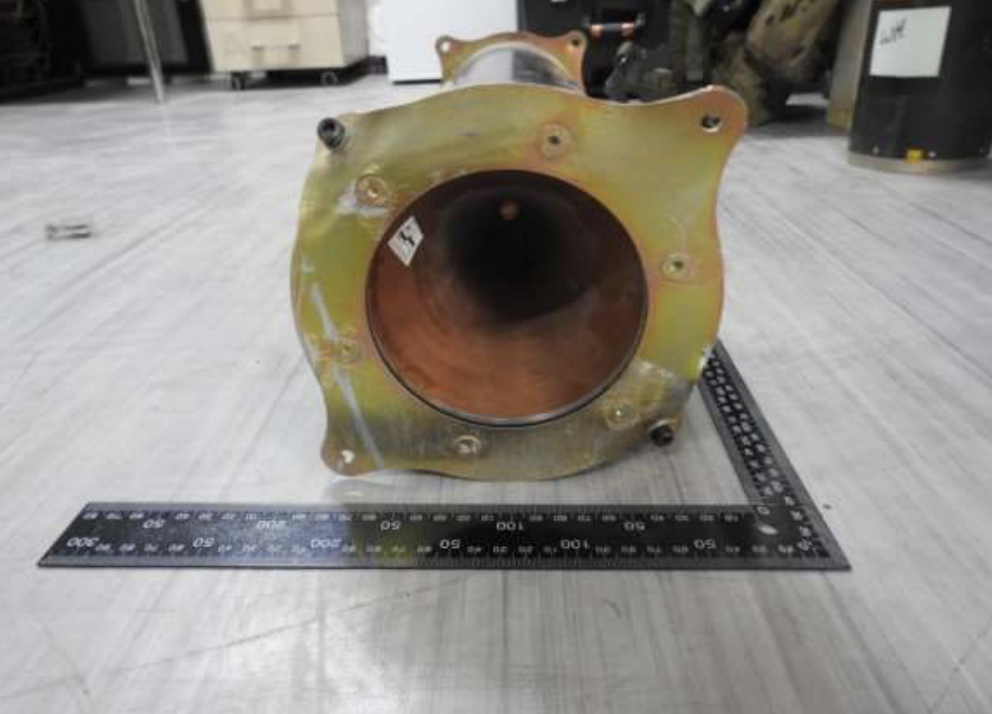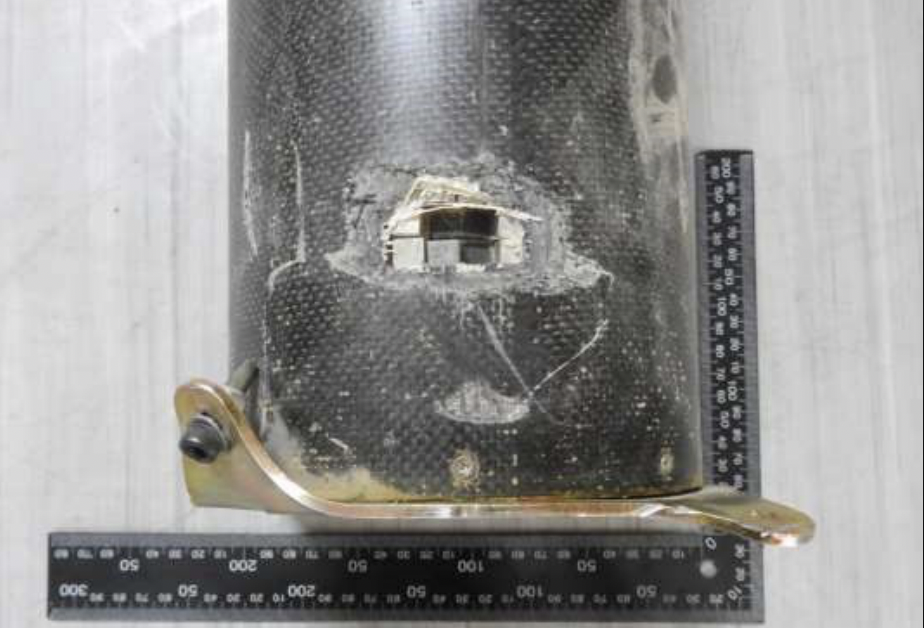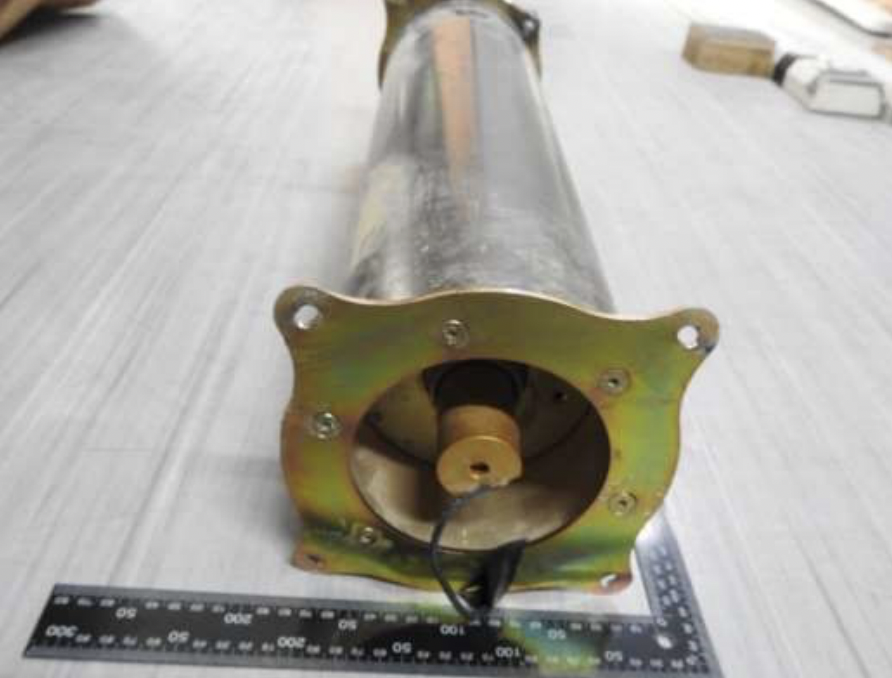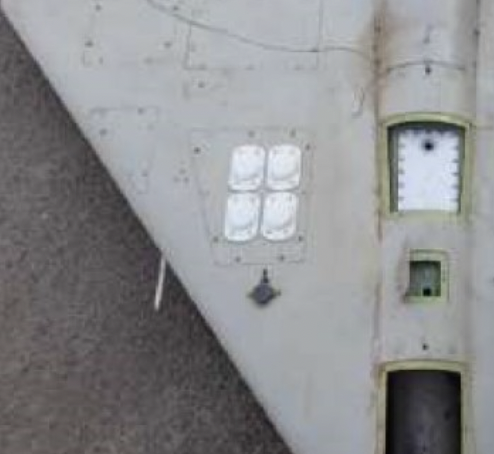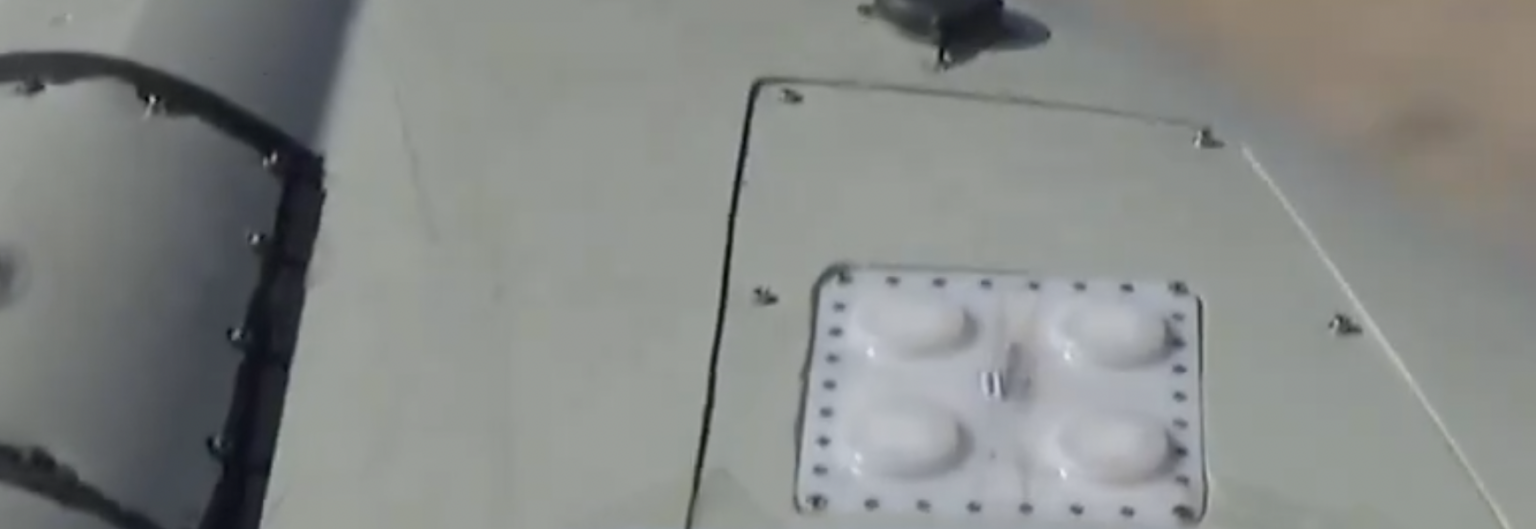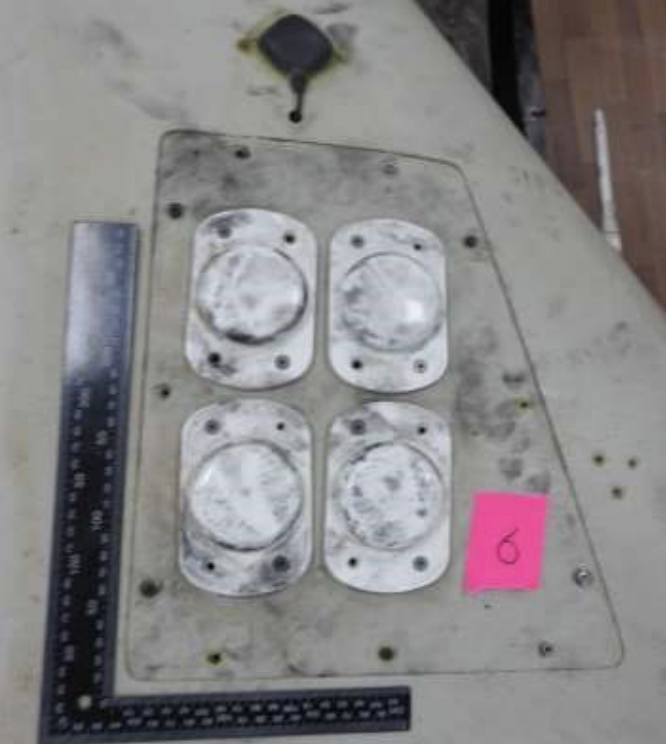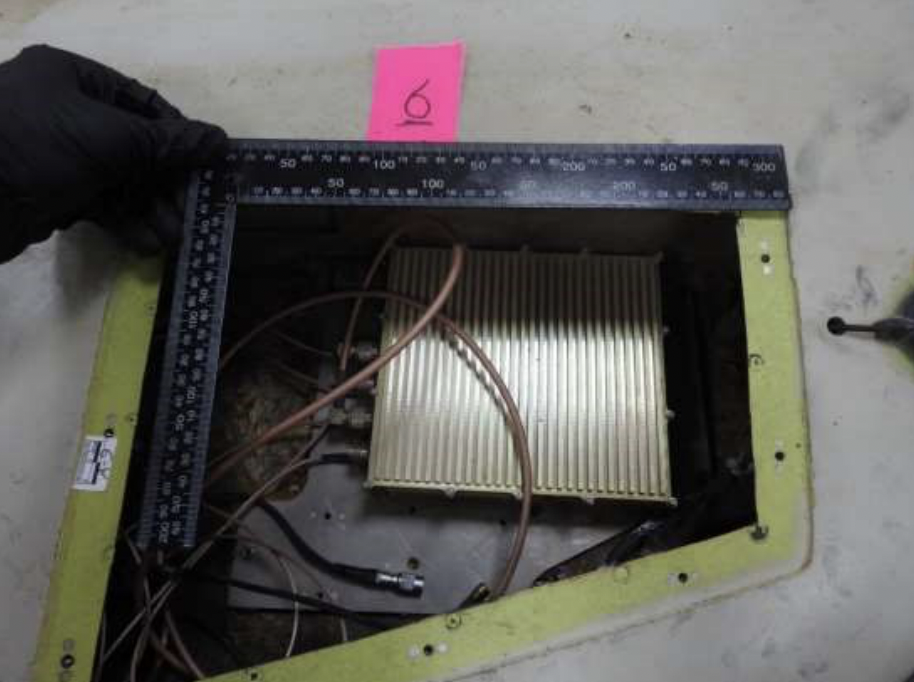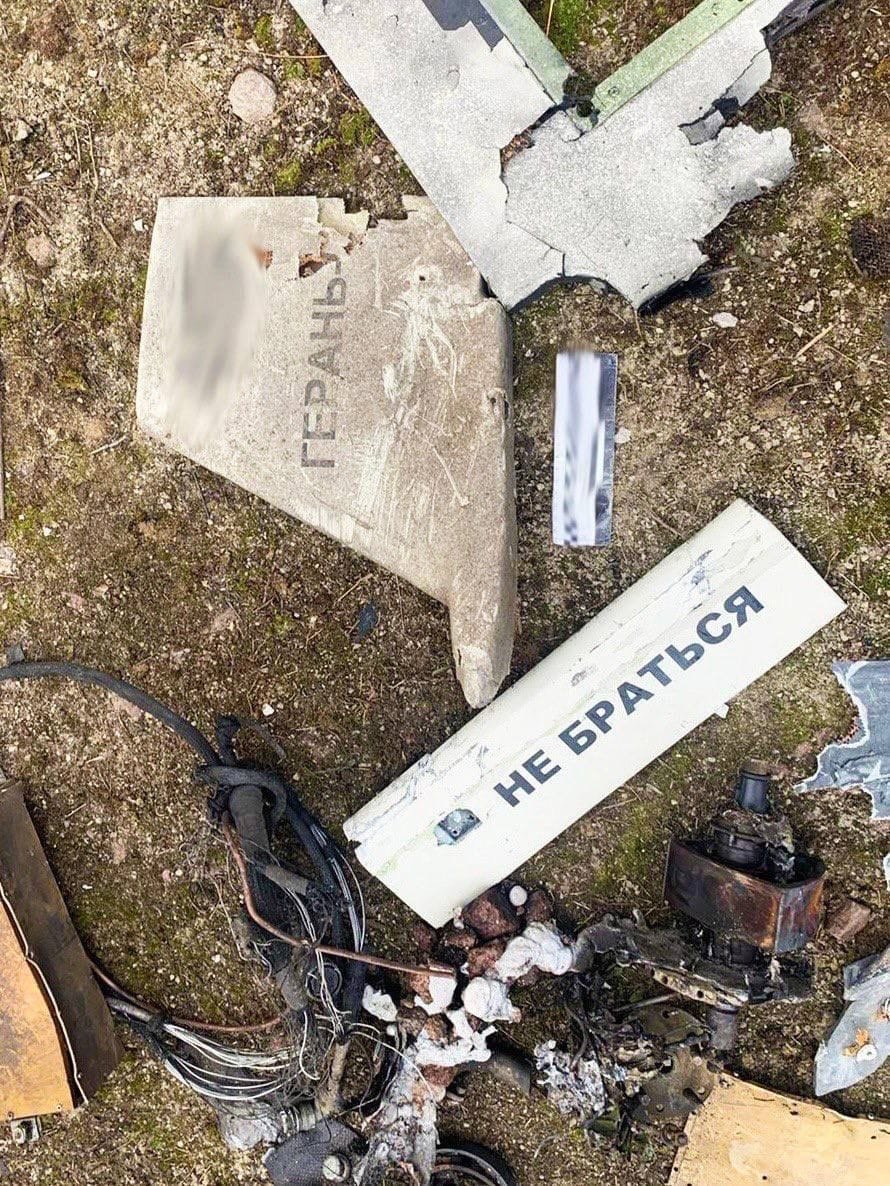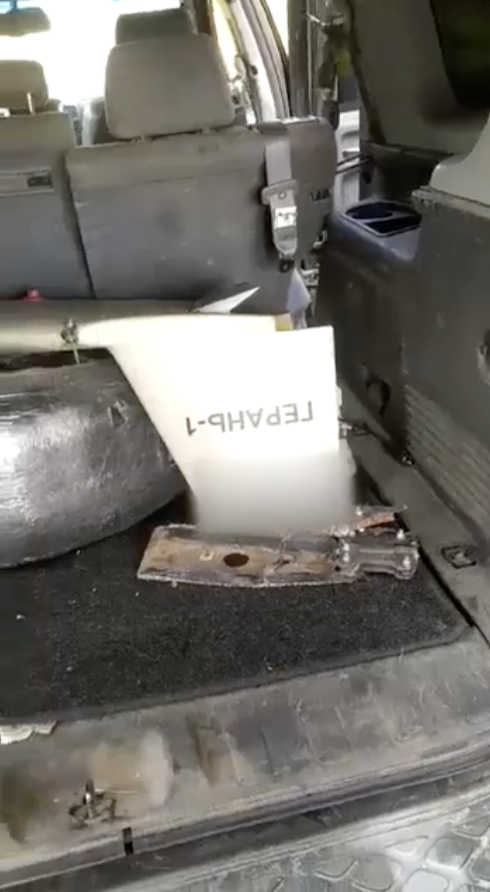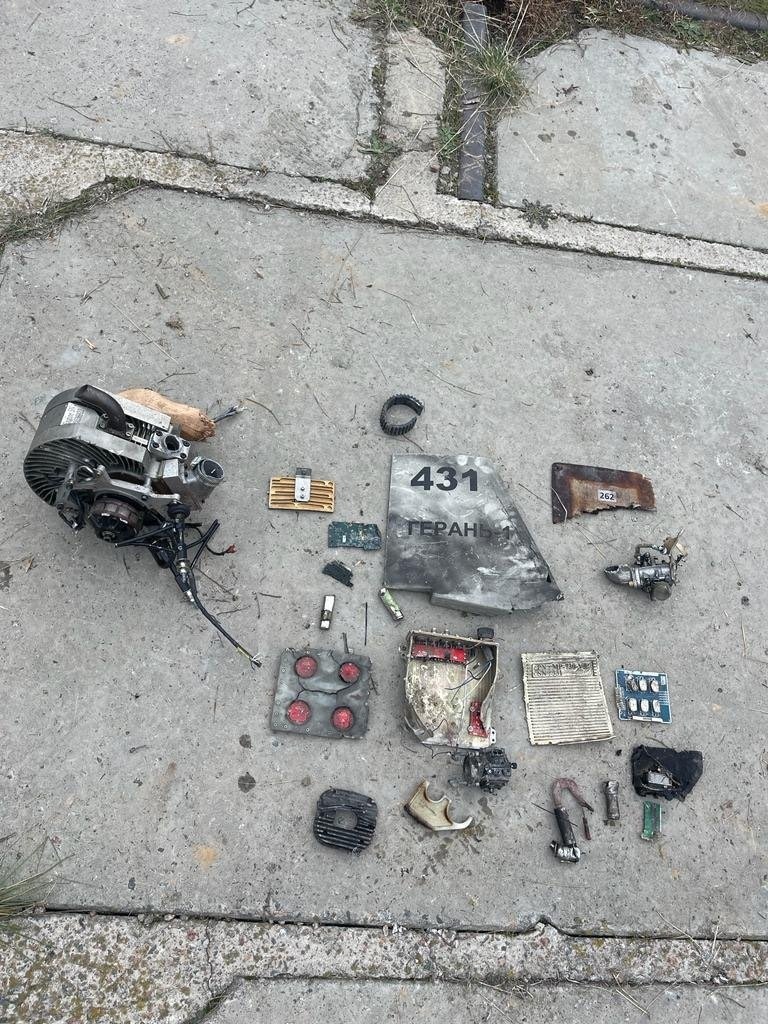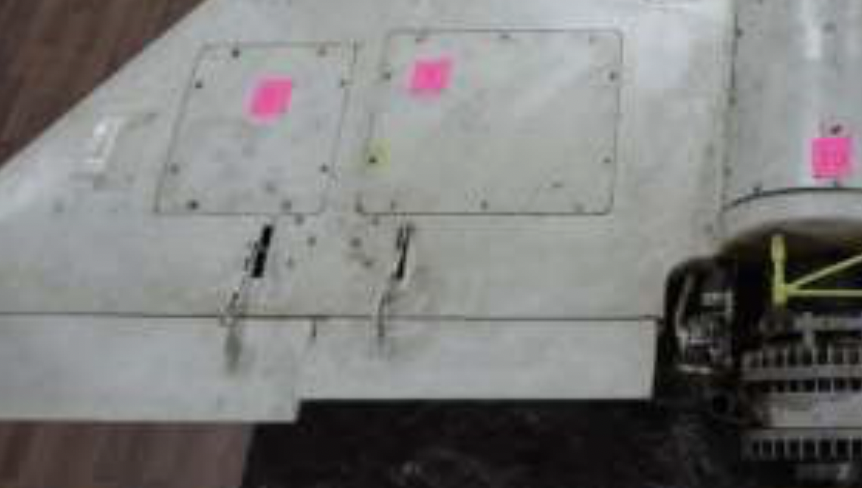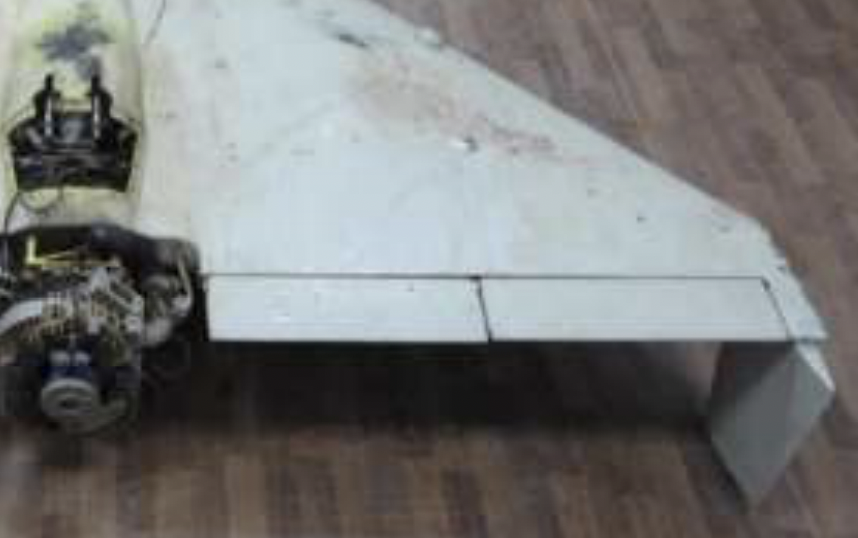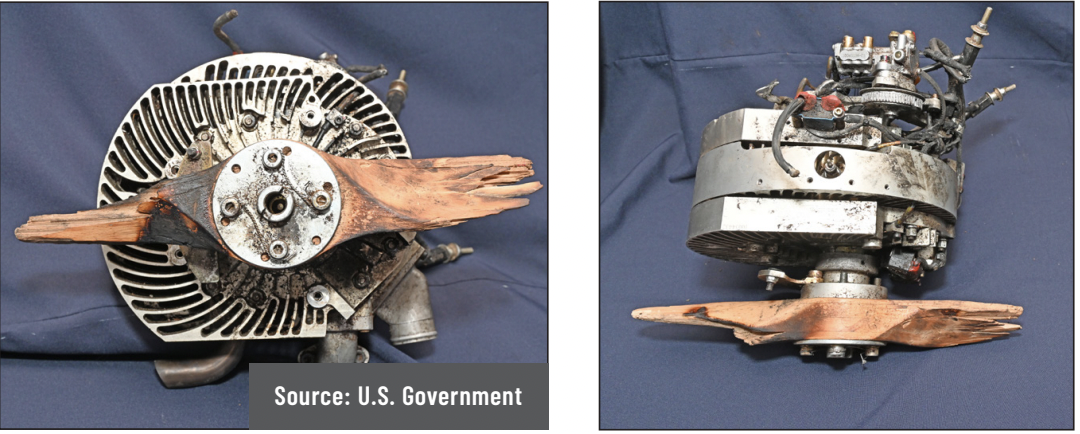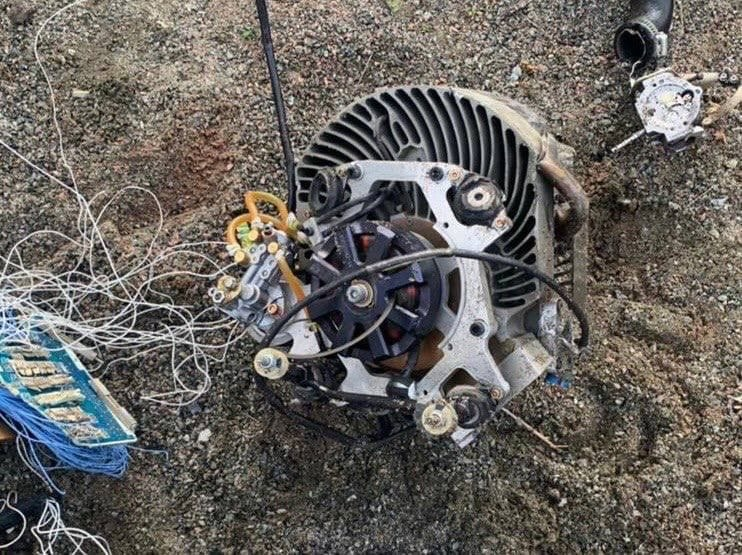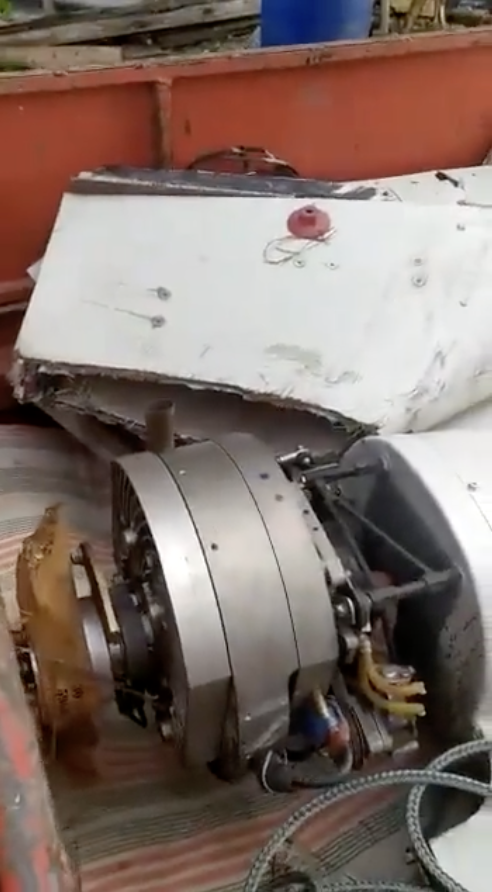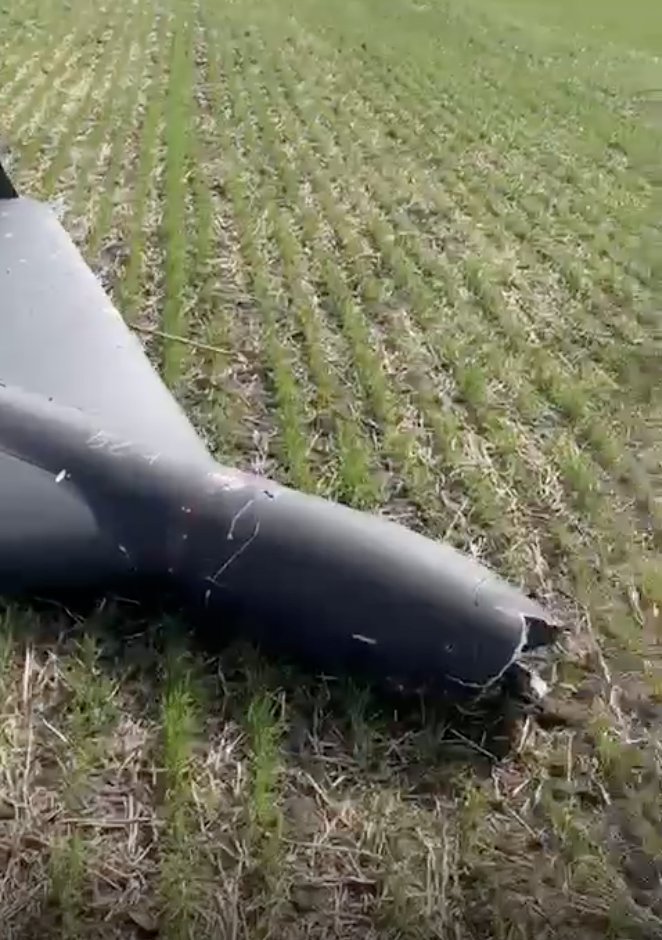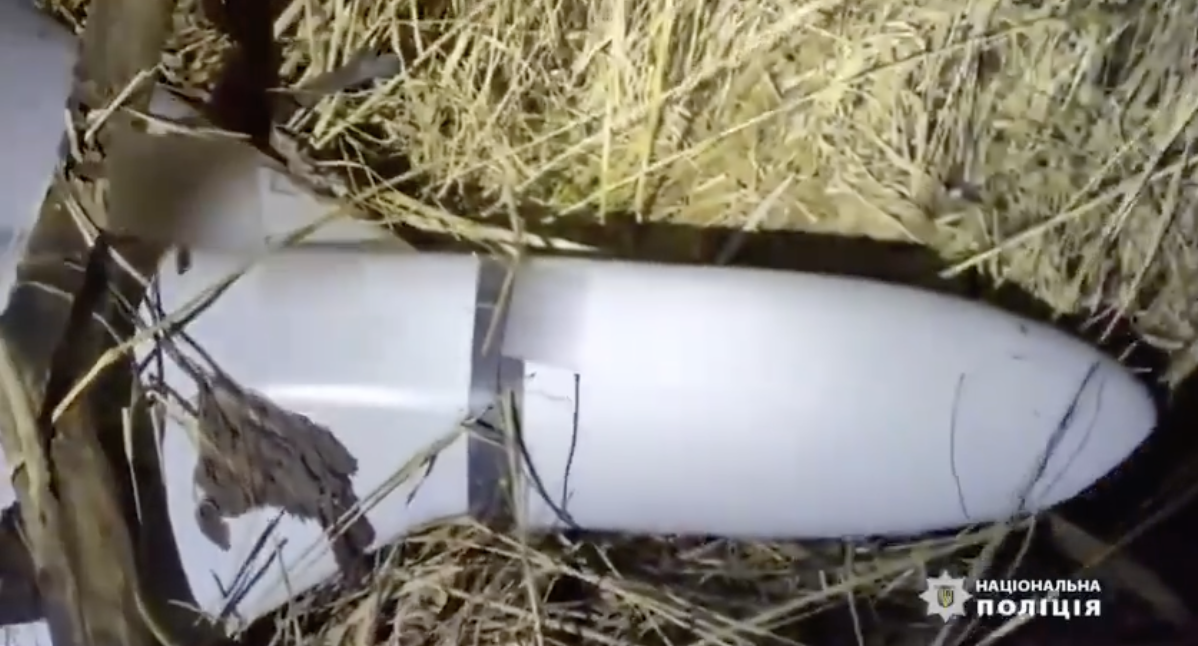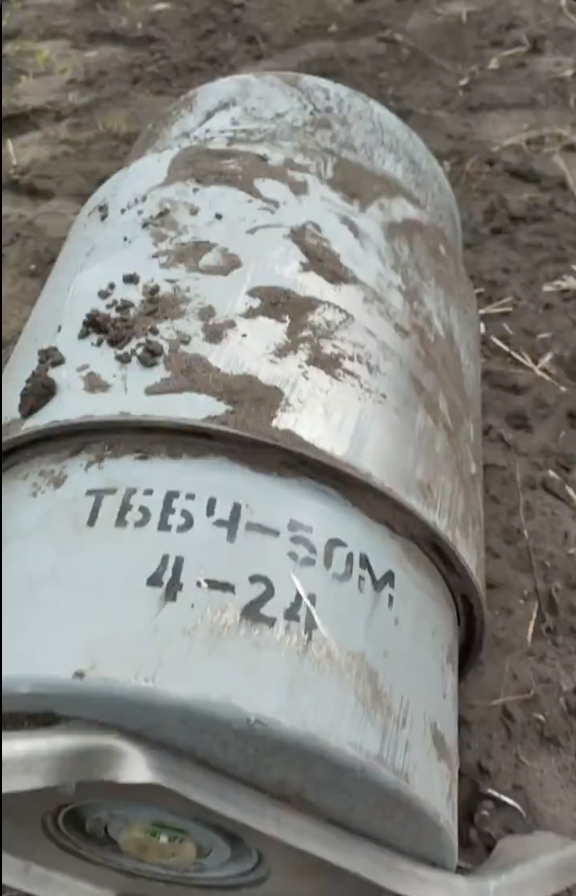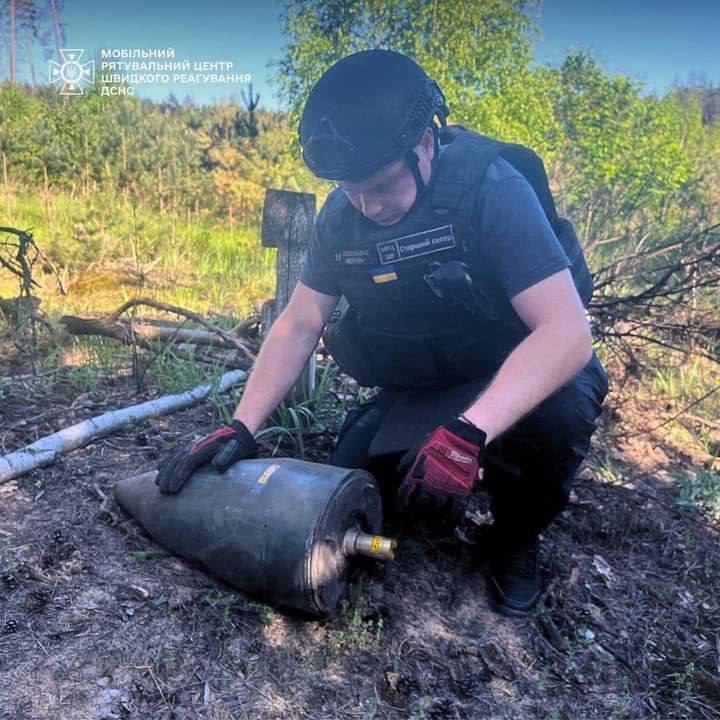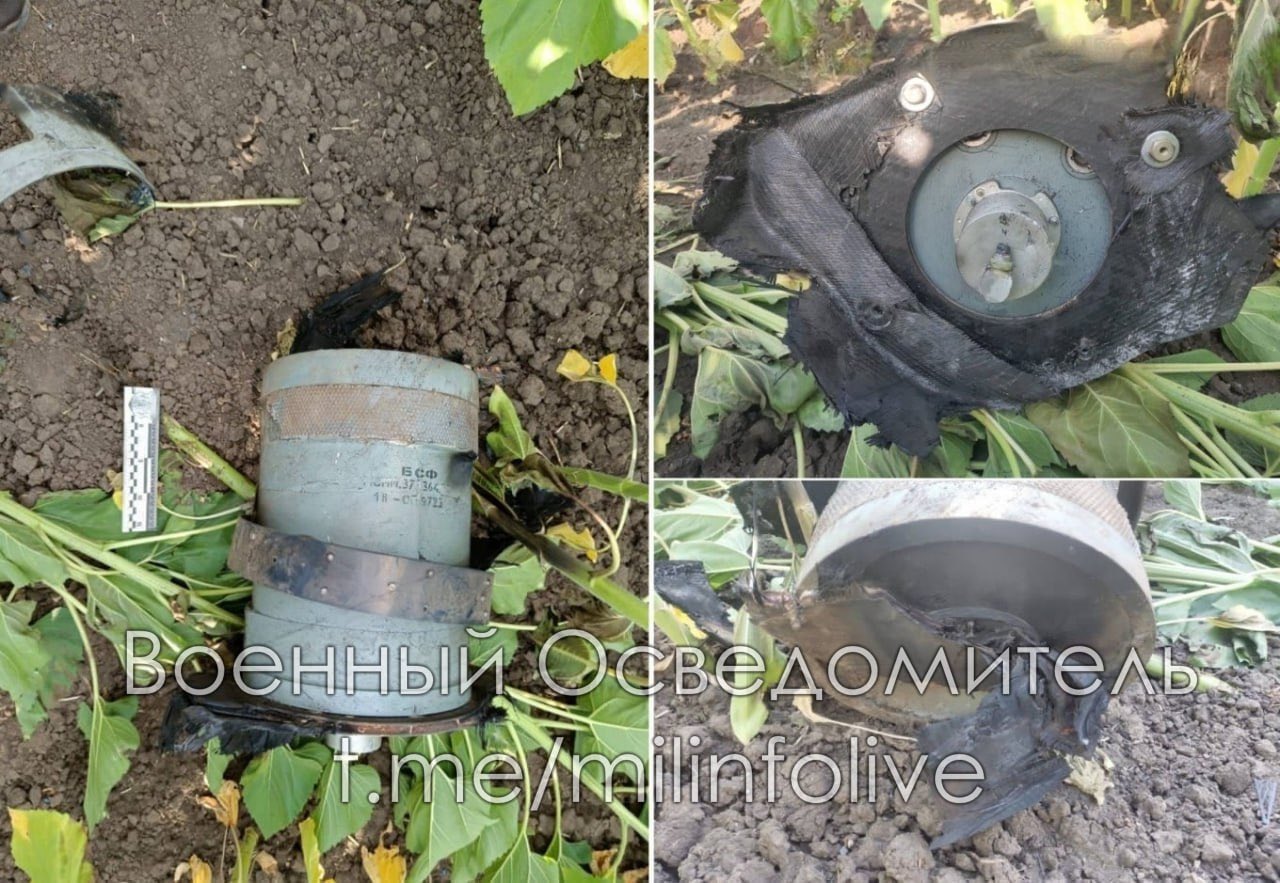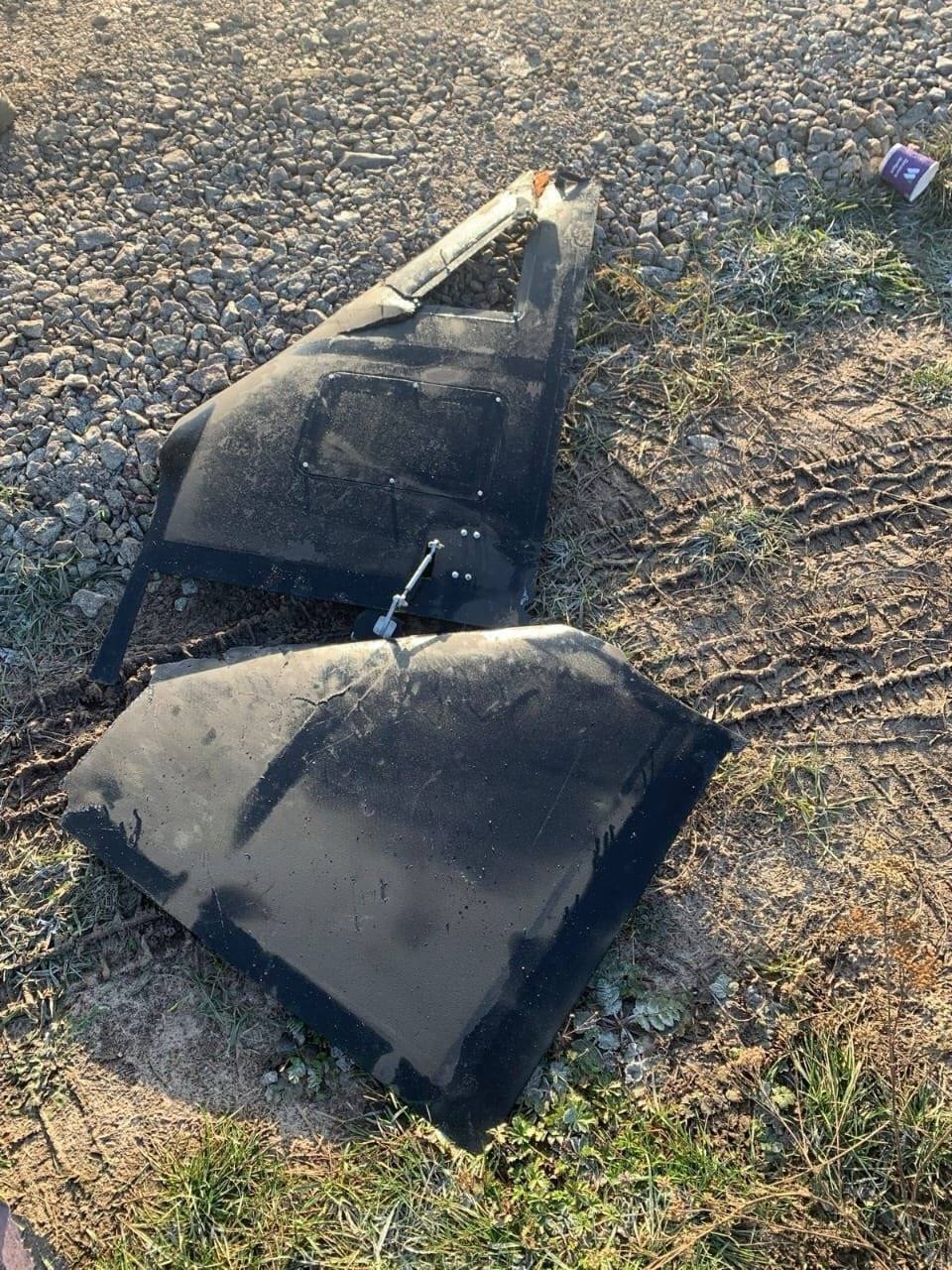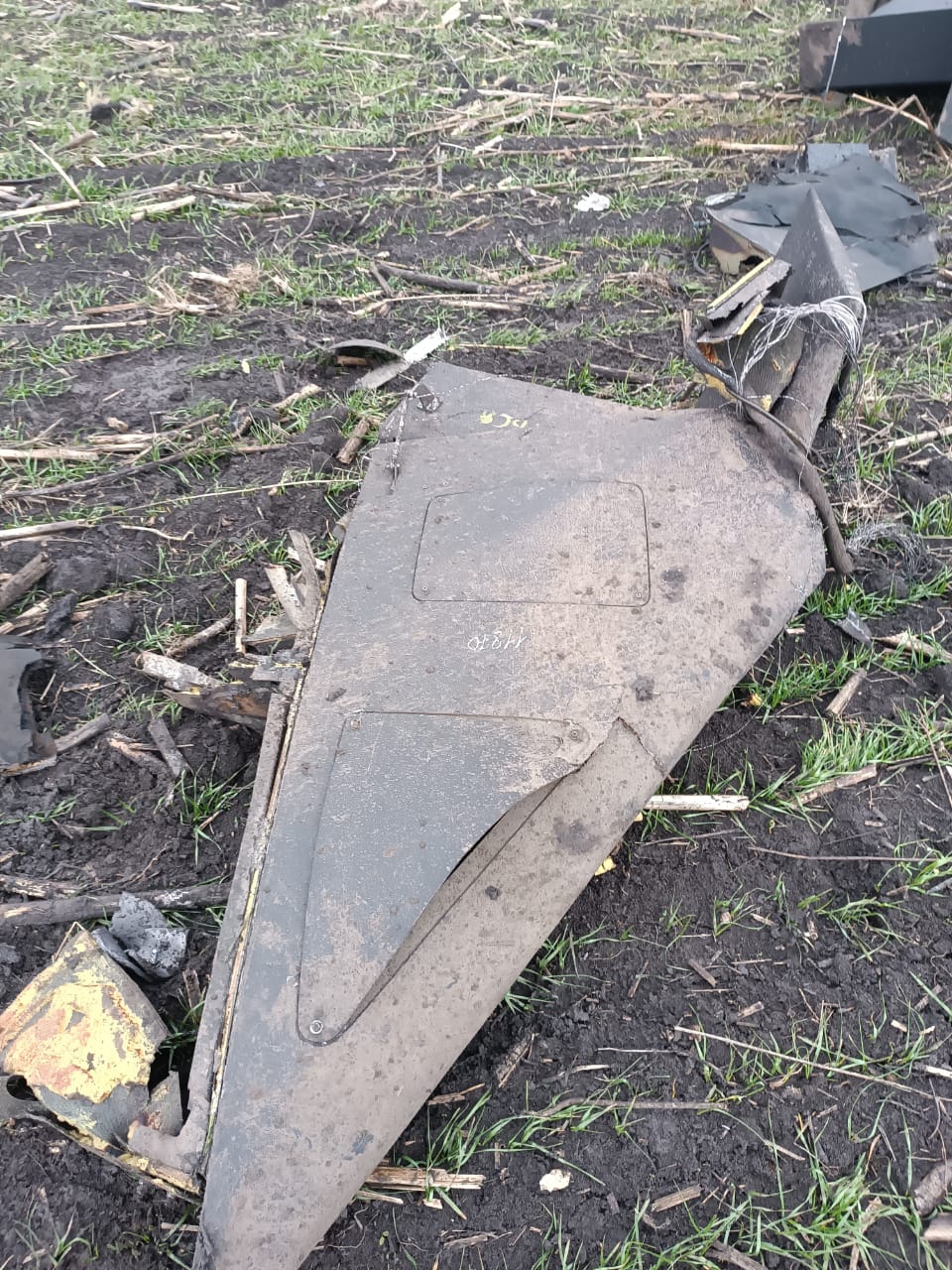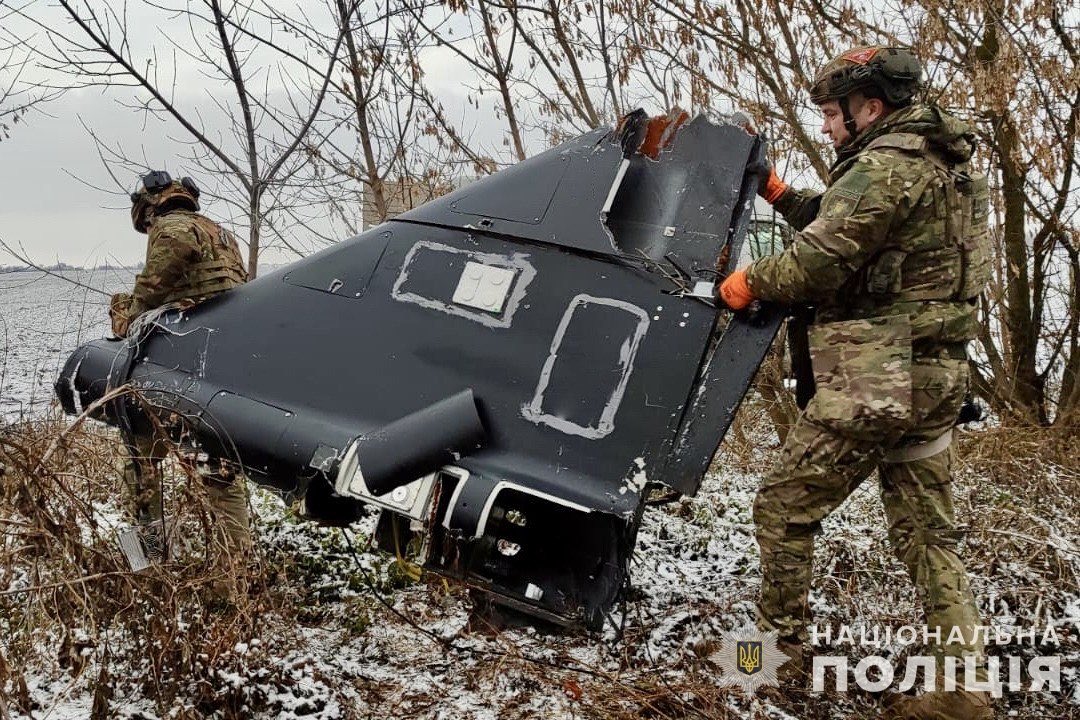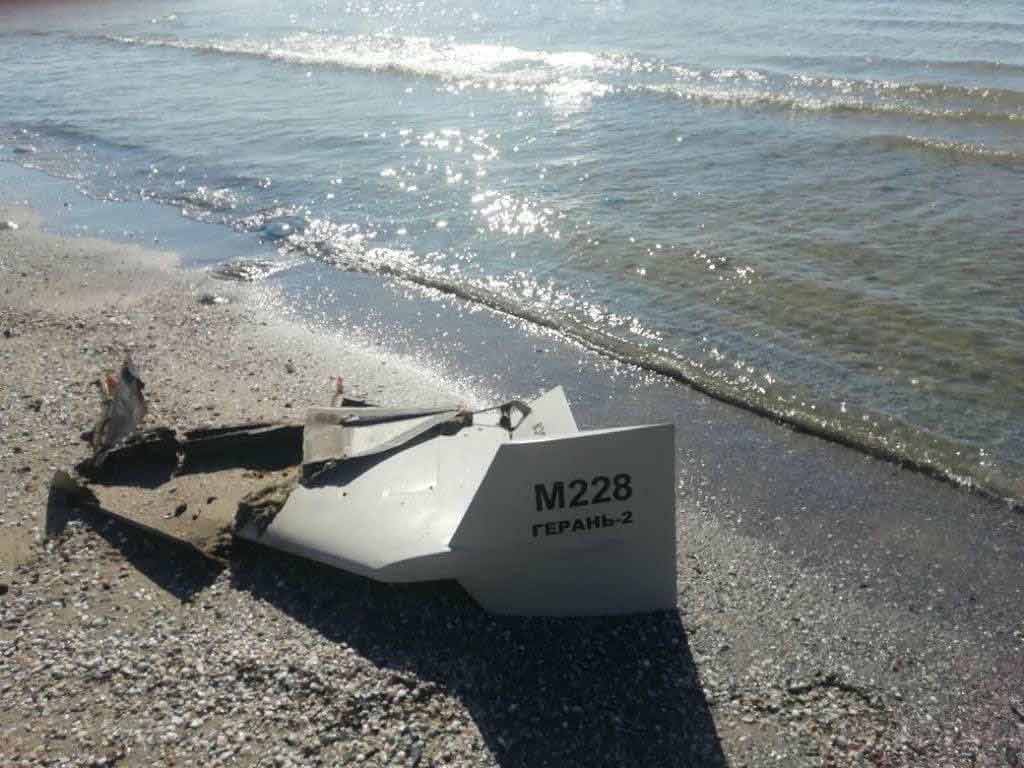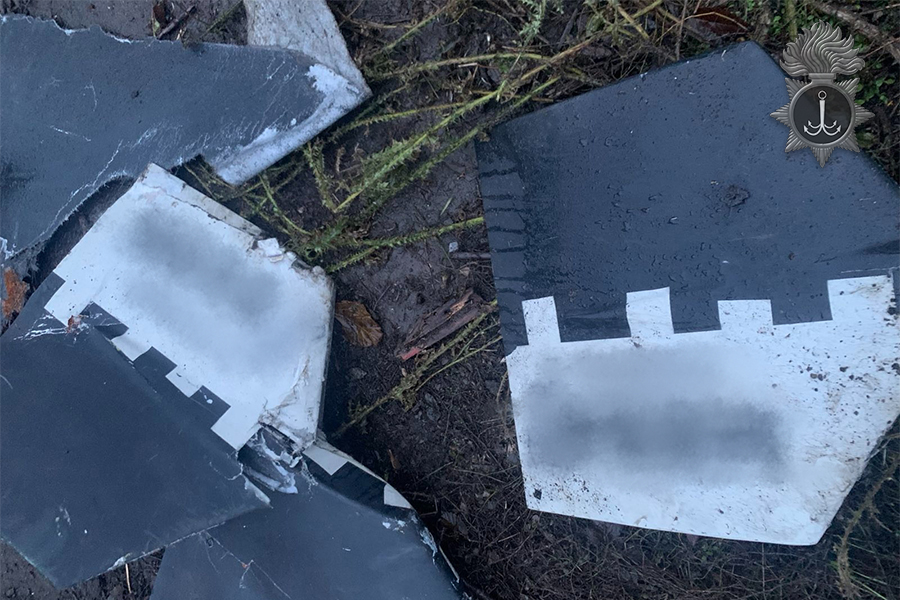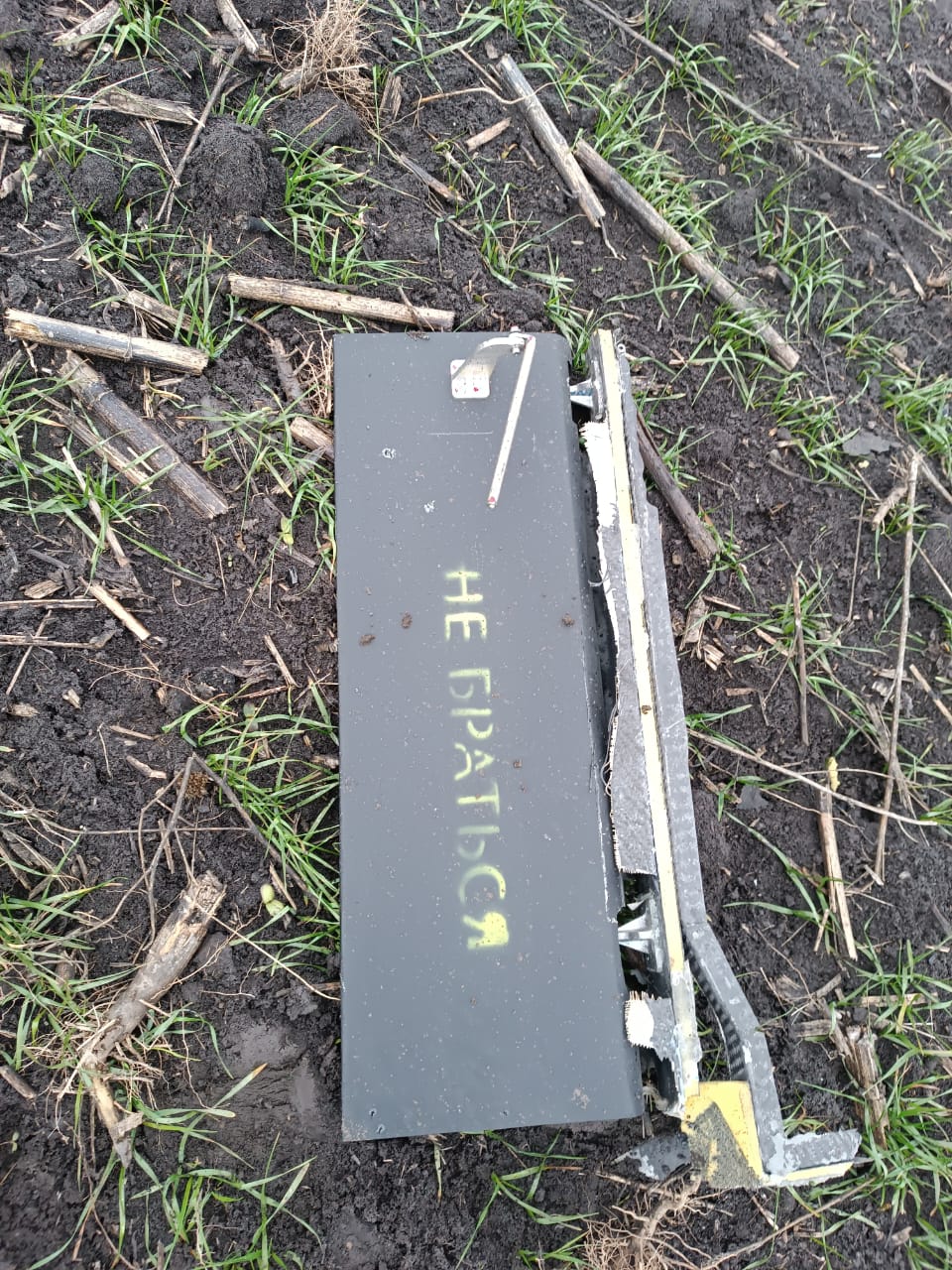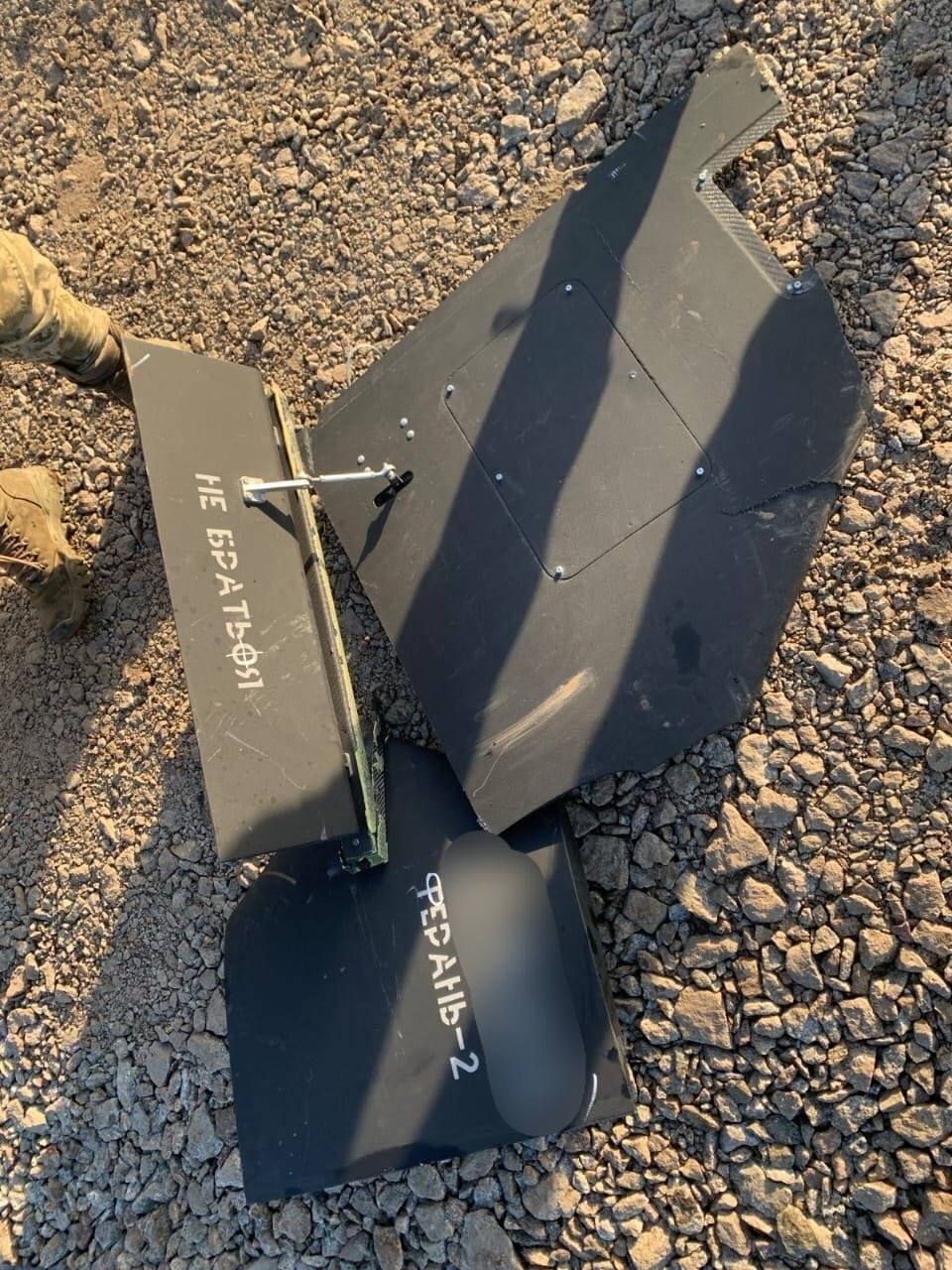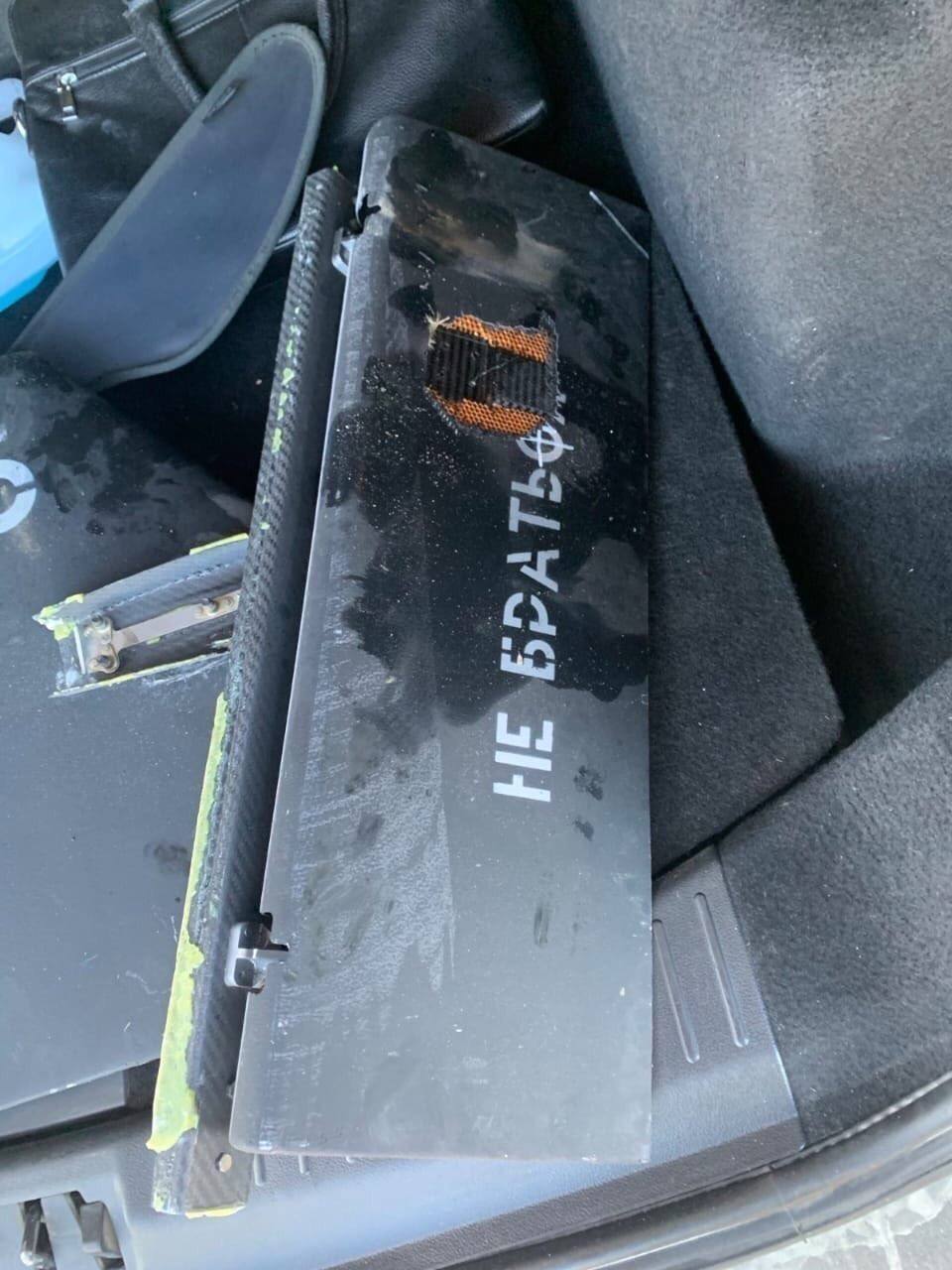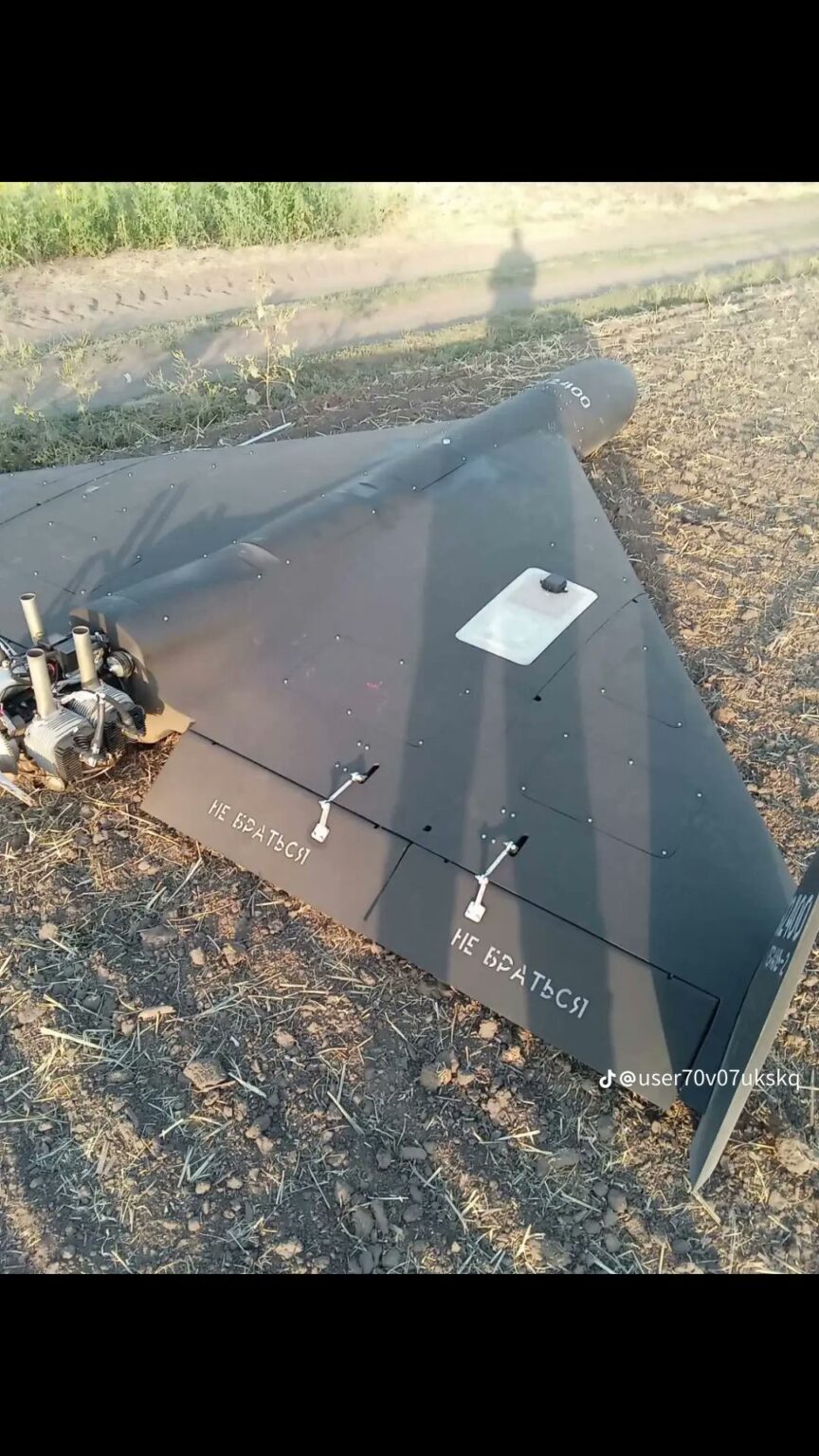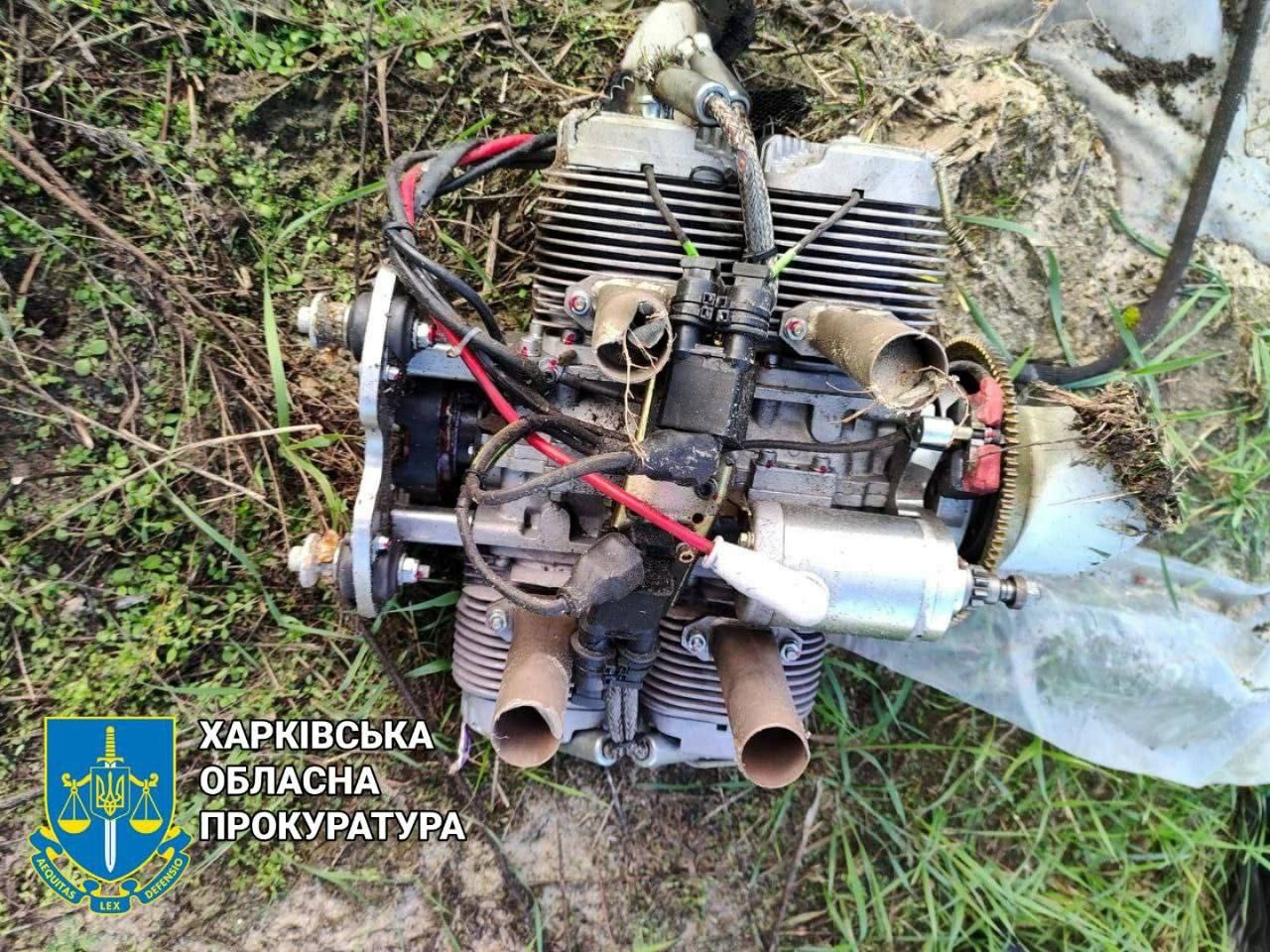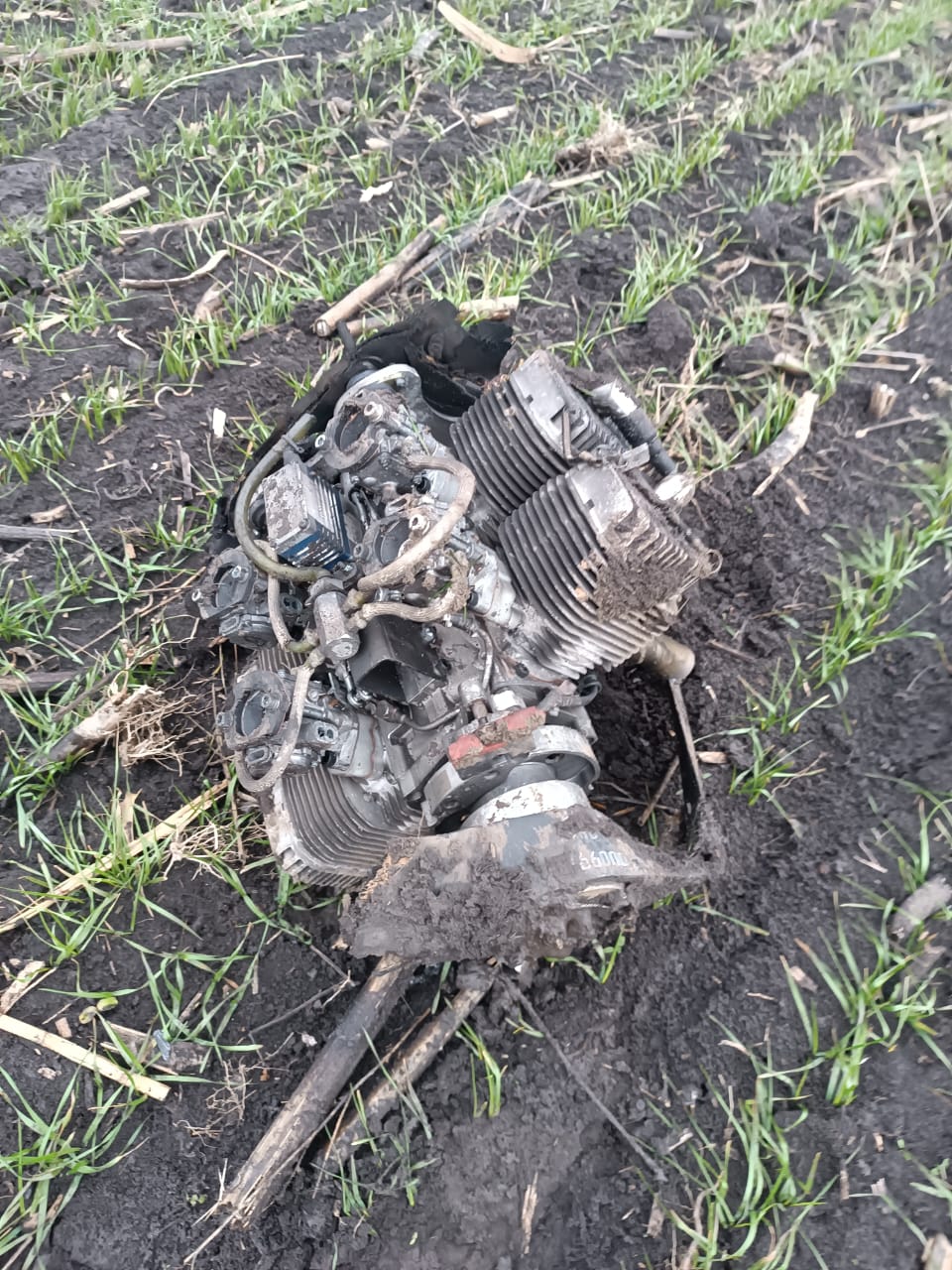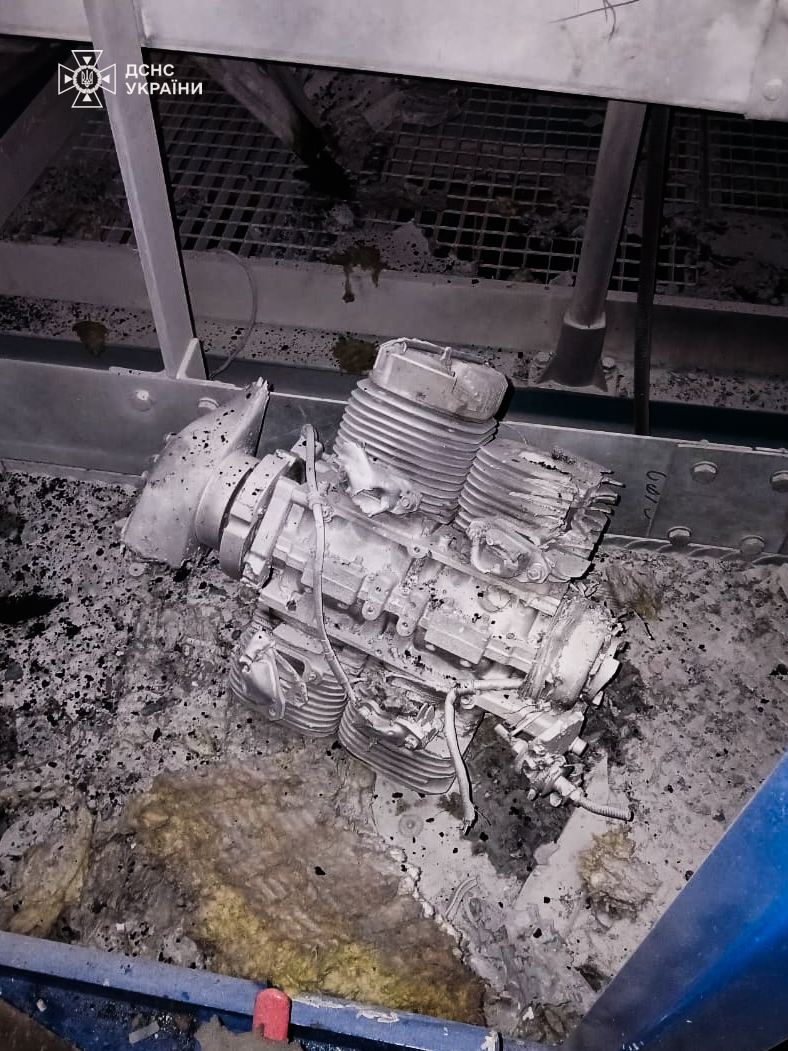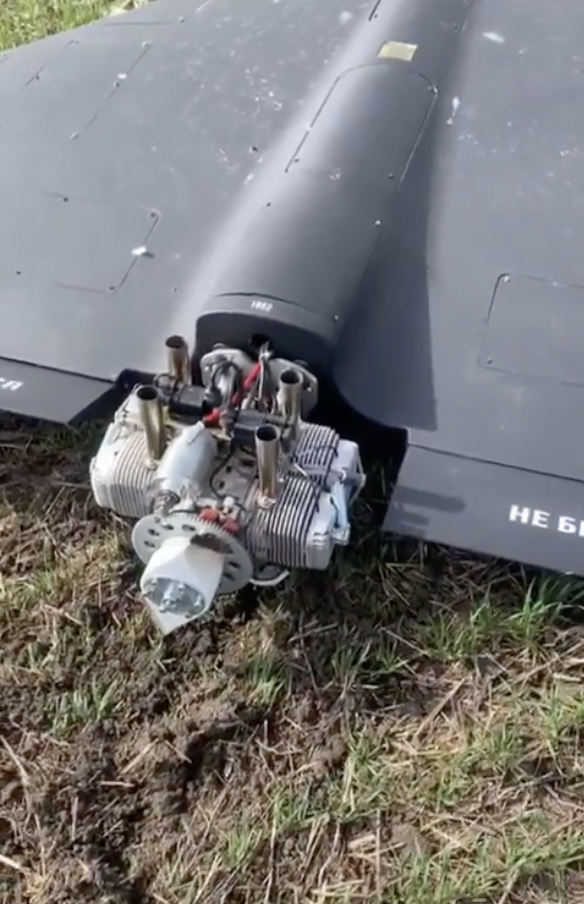Comparison of Shahed-131 and 136 UAVs
This interactive displays models of the Shahed-131 and Shahed-136, allowing you to compare key visual features and learn about similarities and differences in design.
Click on a button below to view the key component parts of the munitions. Each part is accompanied by technical details and presented alongside images from the OSMP archive.
Shahed-131: Length of 2.6 metres, wingspan of 2.2 metres.
Shahed-136: Length of 3.5 metres, wingspan of 2.5 metres.
The nose cone, which acts as an aerodynamic cover, is found at the front of the munition and is located forward of the warhead.
Shahed munitions utilise a range of warhead variants, including original Iranian-designed high explosive fragmentation warheads and shaped charge warheads, as well Russian-designed high explosive fragmentation, shaped charge, and thermobaric warheads.
Shahed-131: A 10 to 20 kg warhead is located near the front of the munition.
Shahed-136: A 50 kg warhead is located near the front of the munition, although later Russian-produced variants may contain warheads weighing up to 90 kg that extend further back into the munition.
Two delta (triangular) wings extend from the central fuselage. These are made from fibreglass, and may incorporate carbon fibre on Russian-designed variants. Shaheds often contain a honeycomb structure, which aims to reduce the munition’s radar cross section, decreasing an adversary’s ability to detect the munition during flight.
Shahed-131/136 UAVs cannot be remotely piloted. Instead, they use Global Navigation Satellite Systems (GNSS), such as GLONASS or GPS, to fly towards and strike pre-programmed target coordinates. A white-coloured, four-puck GNSS antenna assembly is typically visible on the right-hand wing of the munition.
The vertical wing stabilisers are located at either end of the wings and provide additional control, while ensuring the munition maintains stability.
Shahed-131: Stabilisers only extend above the delta wing assembly.
Shahed-136: Stabilisers extend both above and below the delta wing assembly.
Four fins are located at the rear of the munition, with two fins per wing. These control surfaces are connected to the main body by hinges and are adjusted by onboard systems to alter the munition’s trajectory during flight.
A single-propeller piston engine can be found at the rear of the munition, providing propulsion to drive the munition forward towards its target.
Shahed-131: A smaller MDR 208 variant motor is employed, which provides a maximum effective range of at least 700–900 km.
Shahed-136: A larger MD-550 variant motor is employed, which provides a maximum effective range of at least 2,000 km.
